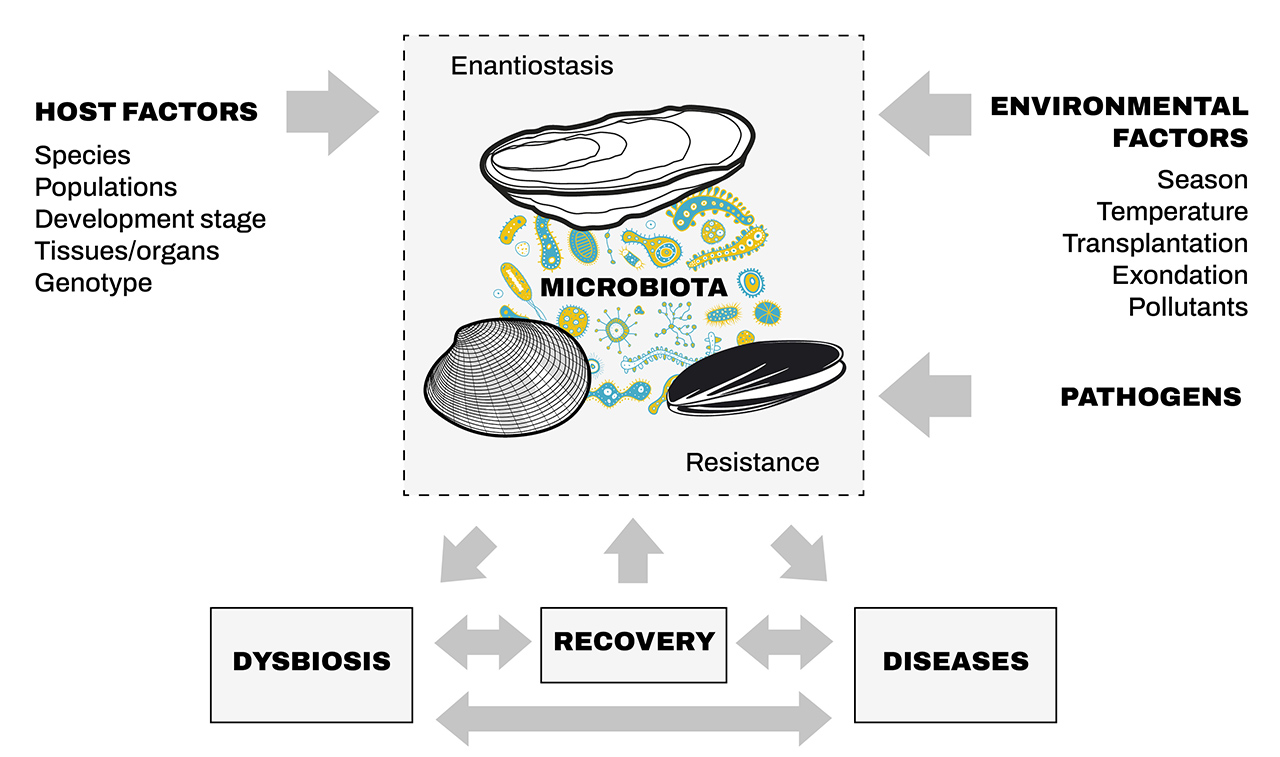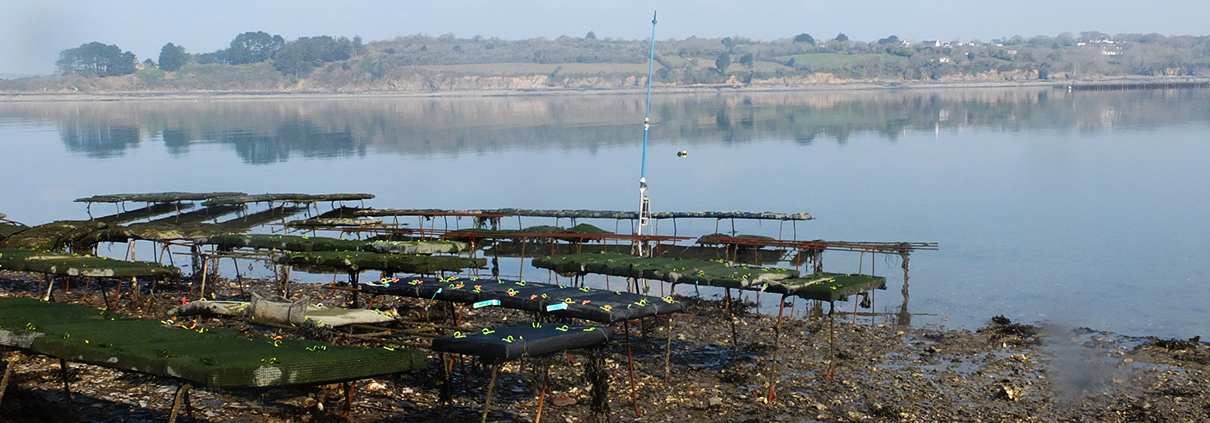Recent advances in bivalve-microbiota interactions for disease prevention in aquaculture
Abstract
In bivalves, no clear-cut functional role of microbiota has yet been identified, although many publications suggest that they could be involved in nutrition or immunity of their host. In the context of climate change, integrative approaches at the crossroads of disciplines have been developed to explore the environment-host-pathogen-microbiota system. Here, we attempt to synthesize work on (1) the current methodologies to analyse bivalve microbiota, (2) the comparison of microbiota between species, between host compartments and their surrounding habitat, (3) how the bivalve microbiota are governed by environmental factors and host genetics and (4) how host-associated microorganisms act as a buffer against pathogens and/or promote recovery, and could thereby play a role in the prevention of disease or mortalities.
Graphical abstract

Figure 2. Host and environmental factors acting on bivalve microbiota.
Some of these factors, alone or in combination, have been shown to lead to dysbiosis, diseases and recovery.
Highlights :
- High-throughput sequencing technologies enabled research on bivalve-microbiota interactions.
- Bivalve-microbiota interactions depend on host factors nested within each other.
- Microbiota interaction with surrounding environment is important for bivalve health.
- Recent studies highlight the involvement of oyster microbiota in disease resistance.
- Microbiome studies will provide new strategies to improve bivalve aquaculture.
Référence :
Christine Paillard, Yannick Gueguen, K Mathias Wegner, David Bass, Alberto Pallavicini, Luigi Vezzulli, Isabelle Arzul. Recent advances in bivalve-microbiota interactions for disease prevention in aquaculture. Current Opinion in Biotechnology, Volume 73, 2022, Pages 225-232. ISSN 0958-1669. https://doi.org/10.1016/j.copbio.2021.07.026.







